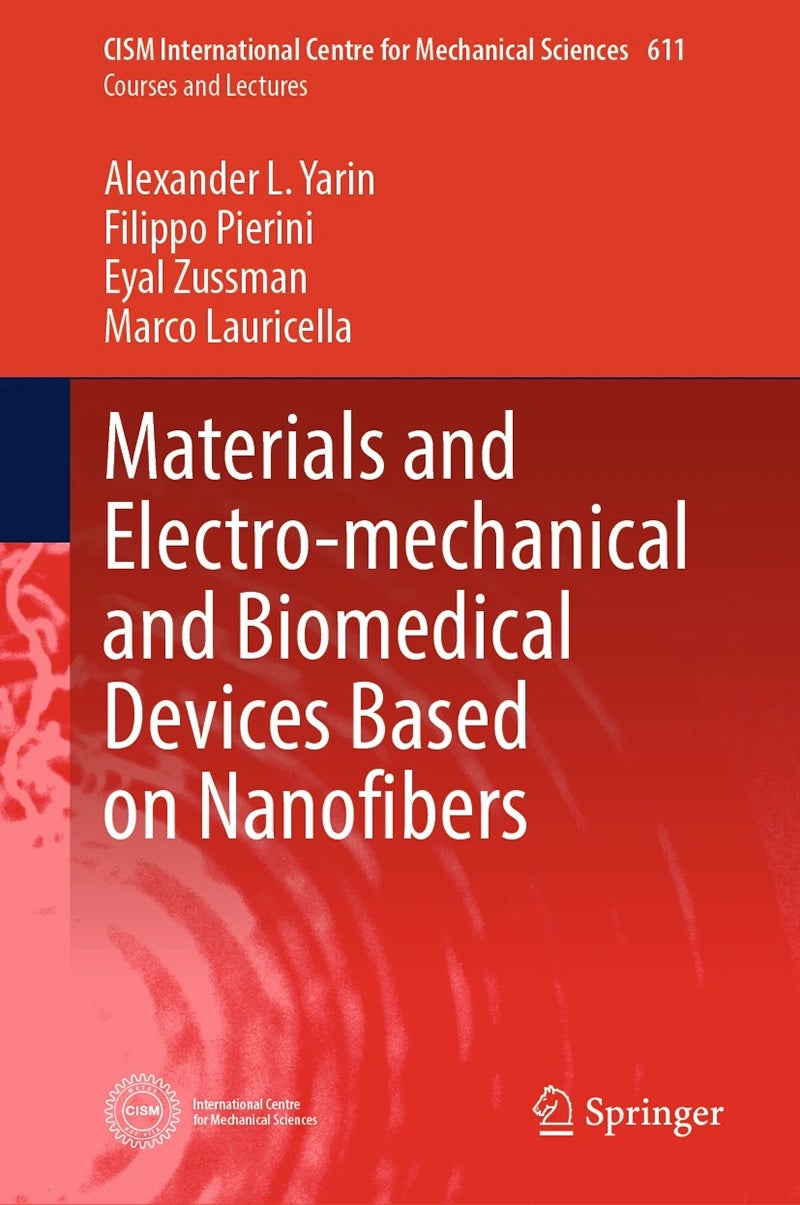Professor Yarin releases ‘Materials and Electro-mechanical and Biomedical Devices Based on Nanofibers’ monograph
1

UIC Distinguished Professor Alexander Yarin has used his vast knowledge to provide a unique perspective in a new monograph called “Materials and Electro-mechanical and Biomedical Devices Based on Nanofibers.”
The book, which was co-written by Filippo Pierini, of the Institute of Fundamental Technological Research of Polish Academy of Sciences, Eyal Zussman, of the Israel Institute of Technology, and Marco Lauricella, of the Institute for Computing Applications of the Italian National Research Council, describes the main part of the ‘Materials and Electro-mechanical and Biomedical Devices Based on Nanofibers’ course given by the authors at the International Centre for Mechanical Sciences in July 2022 in Udine, Italy. It took two years to write and incorporates approximately 10 years of research published individually and collaboratively.
“Nanofiber-forming processes and the resulting fibers became a key element in many modern technologies,” said Yarin, who is the director of the Multiscale Mechanics and Nanotechnology Laboratory at UIC. “These processes require an in-depth understanding and a concerted interaction of synthetic chemistry responsible for polymers to be used as raw materials, polymer physics providing a link to their viscoelastic behavior, rheological characterization of mechanical properties, and non-Newtonian hydrodynamics of polymer solutions and melts.”
The writers address topics that are not found in other books, which includes fundamentals and modeling of fiber-forming processes like electrospinning and solution blowing of synthetic polymers and plant-derived biomaterials such as soy protein, zein, lignin, oats, sodium alginate and cellulose acetate, and such animal-derived biomaterials like silk protein, chitosan, bovine serum albumin, and fish sarcoplasmic protein.
“Some of these processes have already been demonstrated as a versatile, robust and industrially scalable approach to form monolithic and core-shell nanofibers from bio-waste,” said Yarin. “The core-shell fibers with healing agents in the core are key element for self-healing vascular composite materials used to sustain mechanical properties and for corrosion protection. Their mechanical characterization, an explanation of their action in the framework of the fracture mechanics, and demonstration of healing comprise an integral part of the book.”
In addition, the book covers application-oriented nanofibers such as self-healing vascular nanotextured materials, biopolymer nanofibers, soft robots and actuators based on nanofibers, biopolymer nanofiber-based triboelectric nanogenerators, metallized nanofibers, and heaters and sensors based on them.
The researchers discuss injectable nanofibrous biomaterials, fibrous hemostatic agents and their interaction with blood, as well as electrospun nanofibers for face-mask applications. They also detail polyelectrolytes-based complex nanofibers and their use as actuators, and cover drug release facilitated by polyelectrolytes-based complex nanofibers.